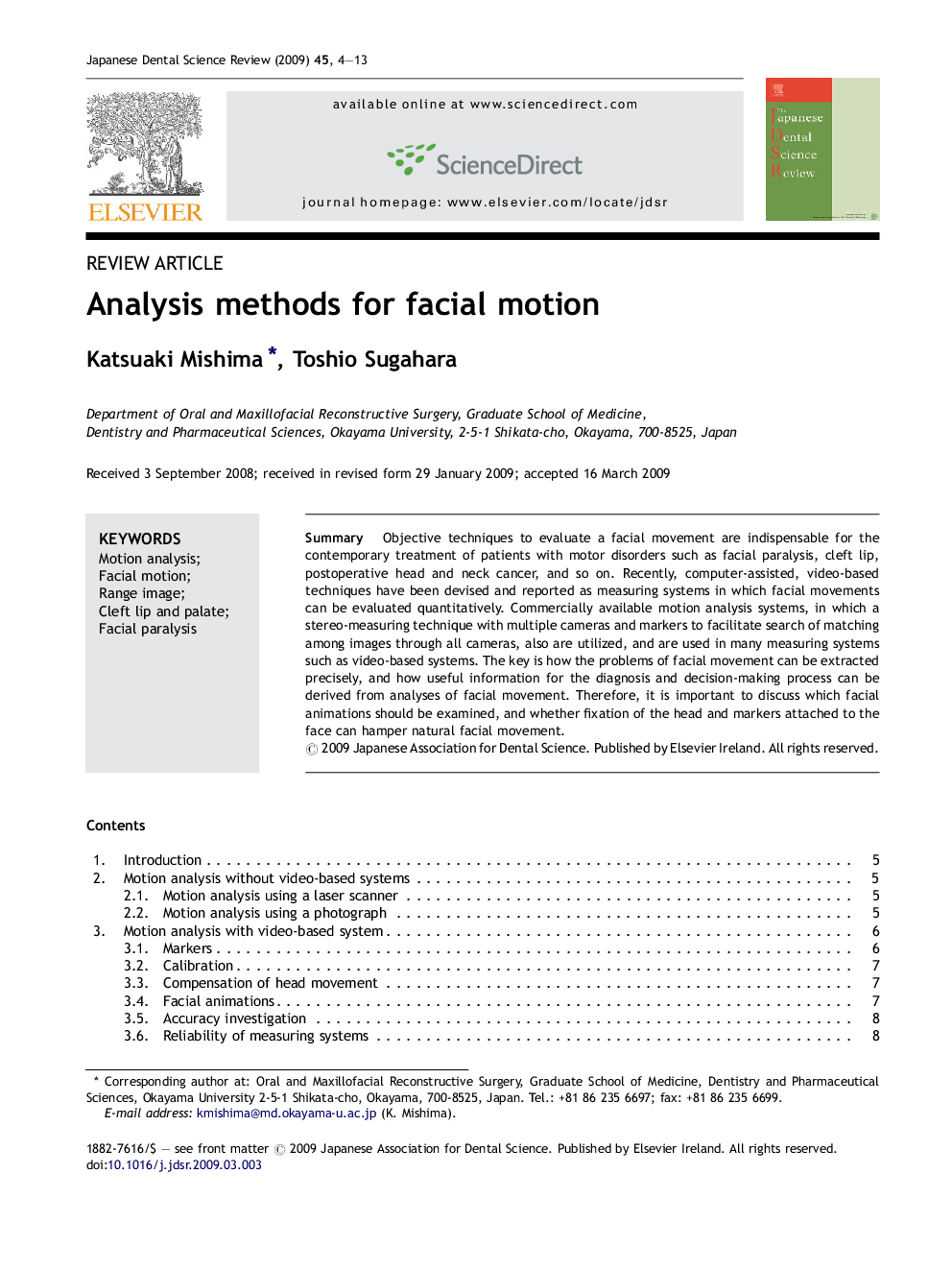| Article ID | Journal | Published Year | Pages | File Type |
|---|---|---|---|---|
| 3137022 | Japanese Dental Science Review | 2009 | 10 Pages |
SummaryObjective techniques to evaluate a facial movement are indispensable for the contemporary treatment of patients with motor disorders such as facial paralysis, cleft lip, postoperative head and neck cancer, and so on. Recently, computer-assisted, video-based techniques have been devised and reported as measuring systems in which facial movements can be evaluated quantitatively. Commercially available motion analysis systems, in which a stereo-measuring technique with multiple cameras and markers to facilitate search of matching among images through all cameras, also are utilized, and are used in many measuring systems such as video-based systems. The key is how the problems of facial movement can be extracted precisely, and how useful information for the diagnosis and decision-making process can be derived from analyses of facial movement. Therefore, it is important to discuss which facial animations should be examined, and whether fixation of the head and markers attached to the face can hamper natural facial movement.
